I've been wondering about the oak trees. They were late to start developing leaves. Well, later than my ash tree and the maple trees. But I did notice when they got their flowers and leaves and began littering the ground with their pollen in May (a couple of weeks after my tree dropped all of its flowers). Unfortunately for me, however, the oak trees in the neighborhood are quite a bit higher than the other trees. I haven't been able to get a good look at their leaves or twigs or anything! Then on Monday, Mother Nature helped out once again by leaving a fallen oak twig right on my path to the boys' school. You know what happened next (anyone keeping count of how many of these things I've dragged home so far? I hope not.)
So let's take a closer look at an oak tree, shall we?

The oak leaf. I love the rich green color! And this thing is as large as my entire hand! That's pretty big for a single (not compound) leaf! Now, I never would have been able to identify an oak tree by its leaves before my science class. And it wasn't that we learned about oak leaves either. We had just started this tree project and were asked to draw a twig. I chose the only twig on the table that still had leaves on it - brown, shriveled leaves (well,it was January!).
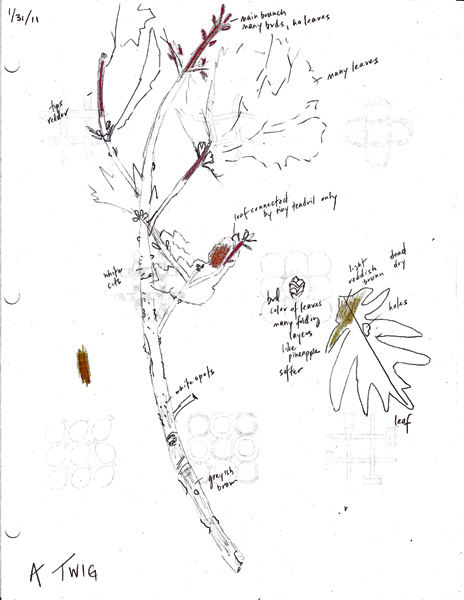
Someone told me it was from an oak tree. And from then on, I could recognize the oak trees by the dried-up, curled-up lobed leaves hanging from the twigs. But I hadn't ever had a fresh, green one in my hand before. Now that I had the real thing, I was able to go to my favorite tree site and identify it better.
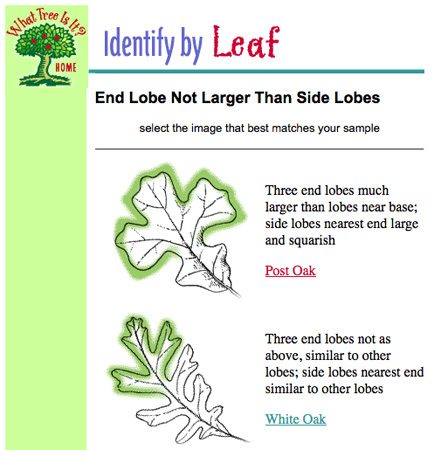
So it looks like I could have White oaks in my neighborhood, although my twig's leaf doesn't have lobes that are quite as long as those drawn here. That's the closest choice though. Definitely an oak. UPDATE: Wait a minute! The twig could be from a Red oak! If perhaps the tips of the lobes on the leaves were once "bristled" (which seems to mean pointy) before they got all brown and yucky, then that would make them Red oaks.
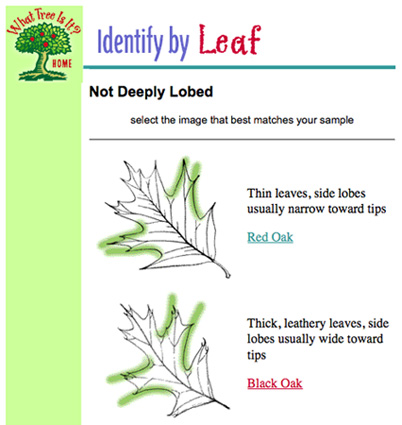
So, look at how the little veins in the leaf all come out of that center line. They're arranged in an alternate pattern (one on one side then one on the other side a little ways up). And lookie, that's also exactly how the leaves grow on the twig!!
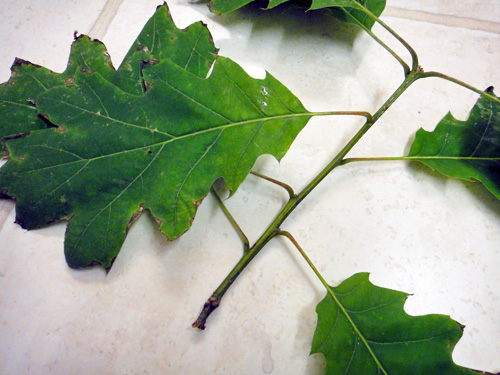
How cool is that?! I love how these patterns seem to repeat over and over in a tree's structure. (I love that about my ash tree too, with it's opposite arrangement of twigs and leaves - everything in pairs, always in pairs).
Another thing I found impressive: the twig above is almost all new growth! Just that tiny tip at the bottom is gray and bark-like. That's a lot more than my ash tree twigs have grown this year. Do oaks grow more each year than ashes? Do larger trees have more growth each year?
I found another twig on the ground that had several smaller offshoots with smaller leaves and each one of them also has growth longer than that on the twigs of my ash.
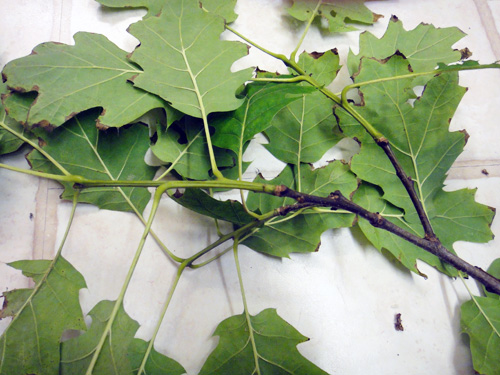
And growing just above each stem where a new leaf is attached is a tiny bud, just like on my ash tree!
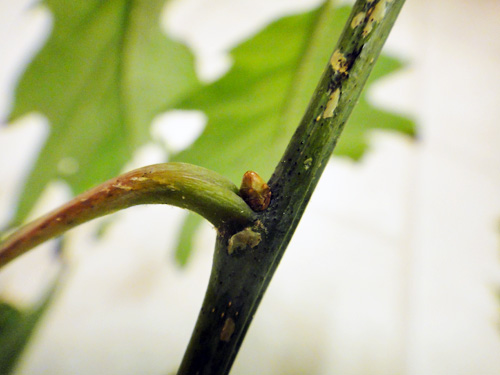
And at the tip, there are three of them.
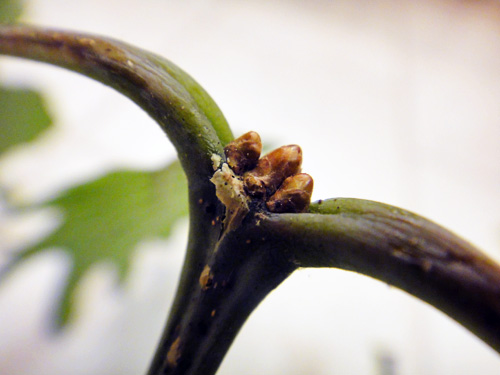
Wait, are those buds or maybe acorns? Where are the acorns? Will they come later? Are they on older twigs? Oooh, I want to see acorns!
So let's take a closer look at an oak tree, shall we?

The oak leaf. I love the rich green color! And this thing is as large as my entire hand! That's pretty big for a single (not compound) leaf! Now, I never would have been able to identify an oak tree by its leaves before my science class. And it wasn't that we learned about oak leaves either. We had just started this tree project and were asked to draw a twig. I chose the only twig on the table that still had leaves on it - brown, shriveled leaves (well,it was January!).

Someone told me it was from an oak tree. And from then on, I could recognize the oak trees by the dried-up, curled-up lobed leaves hanging from the twigs. But I hadn't ever had a fresh, green one in my hand before. Now that I had the real thing, I was able to go to my favorite tree site and identify it better.

So it looks like I could have White oaks in my neighborhood, although my twig's leaf doesn't have lobes that are quite as long as those drawn here. That's the closest choice though. Definitely an oak. UPDATE: Wait a minute! The twig could be from a Red oak! If perhaps the tips of the lobes on the leaves were once "bristled" (which seems to mean pointy) before they got all brown and yucky, then that would make them Red oaks.

So, look at how the little veins in the leaf all come out of that center line. They're arranged in an alternate pattern (one on one side then one on the other side a little ways up). And lookie, that's also exactly how the leaves grow on the twig!!

How cool is that?! I love how these patterns seem to repeat over and over in a tree's structure. (I love that about my ash tree too, with it's opposite arrangement of twigs and leaves - everything in pairs, always in pairs).
Another thing I found impressive: the twig above is almost all new growth! Just that tiny tip at the bottom is gray and bark-like. That's a lot more than my ash tree twigs have grown this year. Do oaks grow more each year than ashes? Do larger trees have more growth each year?
I found another twig on the ground that had several smaller offshoots with smaller leaves and each one of them also has growth longer than that on the twigs of my ash.

And growing just above each stem where a new leaf is attached is a tiny bud, just like on my ash tree!

And at the tip, there are three of them.

Wait, are those buds or maybe acorns? Where are the acorns? Will they come later? Are they on older twigs? Oooh, I want to see acorns!
